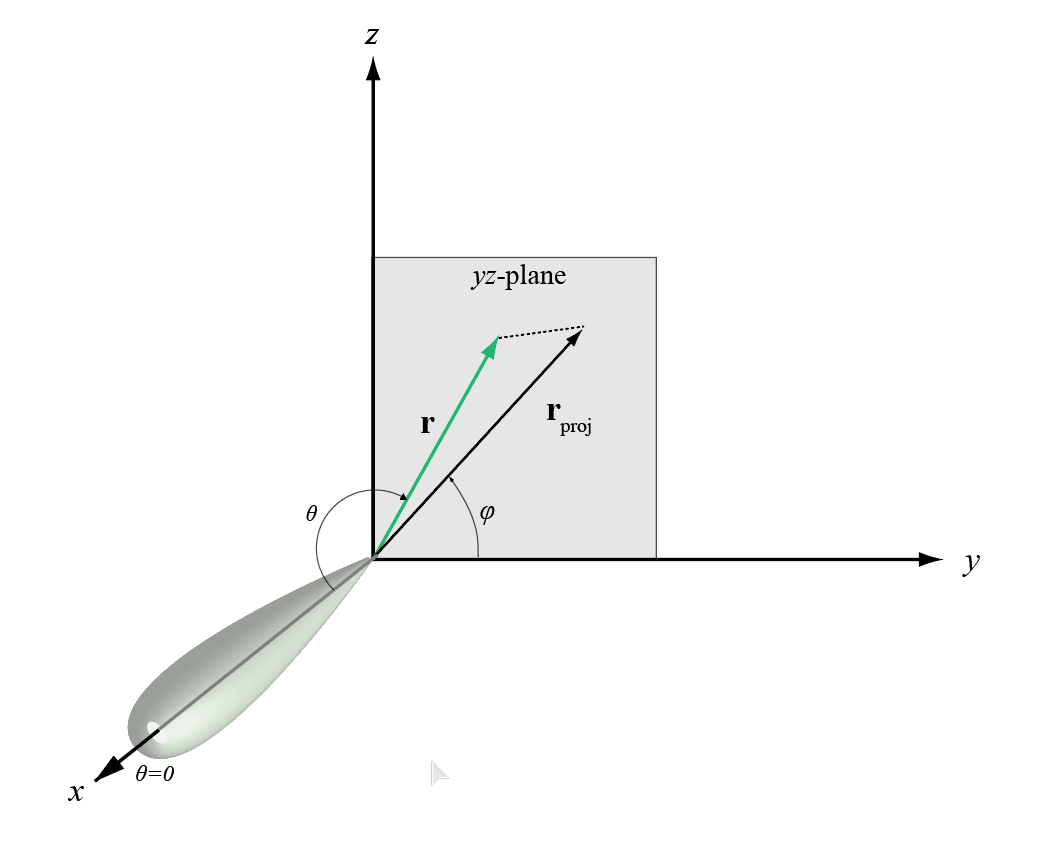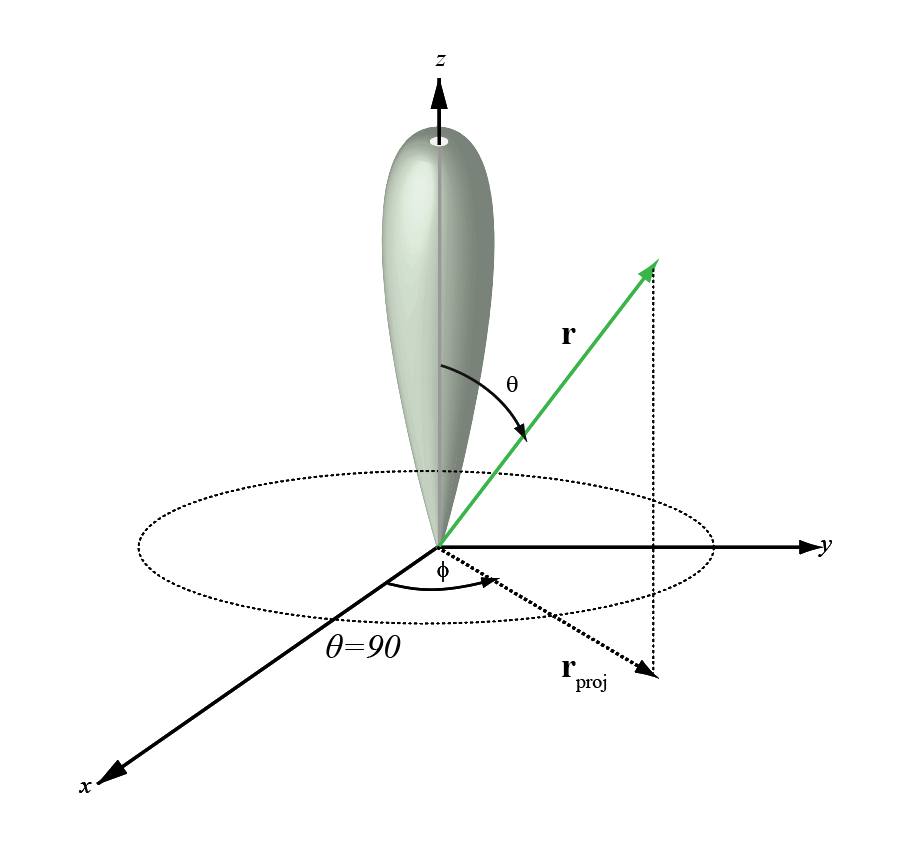Theazimuth angleof a vector is the angle between thex-axis and the orthogonal projection of the vector onto thexyplane. The angle is positive in going from thexaxis toward theyaxis. Azimuth angles lie between –180 and 180 degrees. Theelevation angleis the angle between the vector and its orthogonal projection onto thexy飞机。的角度对th时是积极的e positivez-axis from thexyplane. By default, the boresight direction of an element or array is aligned with the positivex-axis. The boresight direction is the direction of the main lobe of an element or array.
Note
The elevation angle is sometimes defined in the literature as the angle a vector makes with the positivez-axis. The MATLAB®and Phased Array System Toolbox™ products do not use this definition.
This figure illustrates the azimuth angle and elevation angle for a vector shown as a green solid line.



